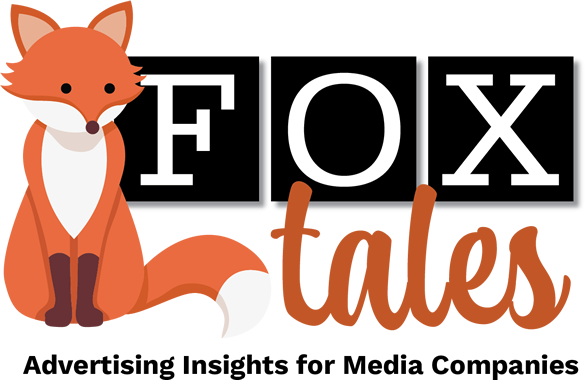With the media industry rapidly changing, and disruption a given, it’s valuable and illuminating to take a step back and have a conversation with someone who knows all about one of the oldest components of the publishing industry: Paper.
It’s doubly instructive when that conversation is with someone from a company that is an incredible 191 years old. Think about it—191 years takes you back to 1833. Andrew Jackson was president. The first regular steamboat service had started just 21 years earlier. The industrial revolution in the U.S. was in its early decades. Abraham Lincoln was 24 years old.
That company is Bulkley Dunton Communications, the New York City-based paper reseller that is the largest paper supplier in North America focused specifically on publishing—serving magazines, catalogs, direct mail and retail. (As an aside, the population of New York is about 8 million. In 1833, it was about 200,000.)

Jim Mares.
We caught up with Bulkley Dunton Vice President Jim Mares for his take on the state of the paper and publishing industries. (For the record, Jim has only been with Bulkley Dunton in the 21st century. He joined the company in 2000.) What follows is an exceptionally interesting and fast-moving Q&A.
Fox Tales: Let’s start with your business model. You operate between the publisher/paper user and the paper manufacturer, allowing the publisher to focus on their core business while you get them the right paper for their needs. Please elaborate.
Jim Mares: Yes, Bulkley Dunton Communications sources and delivers the precise paper you need cost-effectively for books, magazines, catalogs, direct mail, and retail, so that you can focus on your ideas, content, and programs. As always, success is in the details. Paper supply fluctuates, and clients need someone dedicated to monitor that market—with some mills shutting down and others shutting down machines.
It is important to remember supply and demand will balance out. Publishers demand real-time data and more aggressive service platforms that allow them to take advantage of market changes, both in price and grade, and not be stymied by them. Bulkley Dunton’s core capabilities are perfect for these economic times: consultation and program execution.
Fox Tales: Do printing companies also use you to source paper supply? Where do printers fit in your model?
Mares: Our parent company, Veritiv, works directly with printers, supplying sheetfed and web paper, press room, and shipping supplies as North America’s premier print-solutions provider. Bulkley Dunton sells to some printers but primarily focuses on special-interest and mass-market publishers like catalogs, book publishers and the end-user. The end-user has three ways of purchasing their publication paper: Mill direct, merchant, or printer. Each route has its advantages and disadvantages. One common misperception among publishers is that we “do not buy our paper” but, ultimately, all publishers do, one way or another.
Fox Tales: Your company is an astounding 191 years old. First, what did BD do to last so long, and second, what do you bring to customers so they can take advantage of that heritage?
Mares: I love our history and this question. As Doc White, my favorite history professor said, “we are living tomorrow’s history today.” I am proud to be part of this 191-year-old company. A new part of our tradition is our CODE of values, which stands for:
- Cultivate Innovation. Through diverse people and ideas.
- Own It. Simplify the process and accelerate the solution.
- Deliver and delight. Every day. In every way.
- Embrace the Green. One team, shaping success for ourselves, our customers and our planet.
These are easy to say but hard to practice. I said earlier that success is in the details. If we do this today, Bulkley Dunton Communications will continue, and we will become a part of tomorrow’s history. Bulkley Dunton Communications has been, is, and will be a long-term supplier.
Fox Tales: Does working with Bulkley Dunton Communications help insulate publishers from the fluctuations in paper pricing?
Mares: Yes, we assist in identifying, managing, and controlling a publisher’s key raw material in both quality and cost. Our market experience, scale of volume, and mill relationships matter, because they allow us to offer options on the right substrates from the right mill partners that will achieve the marketing objective and meet financial objectives, now and in the future. We also have excellent working relationships with the world’s top mills because of our strong ethical business practices. Second, our program management and execution are second-to-none. Our mill order-management, logistics, data gathering, and reporting offer our customers insights for continuous improvement programs, assuring their brand’s quality and cost control, today and tomorrow. In short, we strive to serve publishers consultatively and operationally.
We track world-wide paper and cellulose fiber markets. Plus, our internal paper-purchasing team interacts daily with domestic and foreign paper mills looking for trends and anticipating supply bottlenecks. This allows us to offer a wide range of options and flexibility, which support each publisher’s market objectives and budget.
As market conditions change, so does the cost of printing paper. Several publishers have complained about the high cost of publishing paper. Here are a couple of data points for them to consider: RISI #5 40# coated groundwood price is 13.08% higher today than it was in January 2022. However, it went as high as 18.69% higher, and has moved down since hitting that high in March 2023.
Bulkley Dunton Communications can control the paper program so that price fluctuations will be less abrupt and within a narrower range than for a publisher whose price is not indexed. We watch for trends that give us an earlier indication of market changes, allowing our customers to manage their marketing and financial budgets through the changing market, rather than just react to market changes.
Fox Tales: Give us a sense of your customer profile. What’s in the wheelhouse for you?
Mares: Most of our customers are special interest “member-zines,” mass-market magazines, catalogers, book publishers and direct mailers. We also help corporate end users with sourcing for their promotional and marketing collateral. Our value is fully engaged with initial savings and, more importantly, continuous improvement within the program approach. No two customers are alike, so the data is interpreted within the context of the customer’s marketing and financial objectives. We serve the customer; the customer does not serve the paper mill, merchant, or printer.
(Bonus Question 1) Fox Tales: On the advertising side, how does BDC help independent sales-rep firms, and how do they help BDC?
Mares: We serve common customers and we both need them to stay financially healthy by getting the best value and staying in business. Bulkley Dunton Communications’ 191-year run is because we are focused on value, which I define as meeting the marketing objectives of our customers at the lowest cost. Knowing there are three paper-purchasing programs available to your customer is one way to show that the independent sales representative has a broader understanding of the customer’s microenvironment and is a connector to the macro marketplace. For example, when we work with publishers, we ask about their ad/edit ratio and strategize on what grade level supports the publisher’s marketing plan while also serving the advertiser. Monetizing that value is unique to each situation.
(Bonus Question 2) Fox Tales: Based on SIIA Media research and other empirical evidence, print remains a strong part of the media portfolio, especially in niche B2B and B2C markets. Tell us why you think that’s the case, and what the longer-term outlook is for printed magazines.
Mares: A recent Bosack’s e-newsletter discussed special-interest periodicals and two thoughts were of particular interest to me. Both affirmed the role of paper in an overall marketing plan: There was Debbee Pezman’s observation, “When I’m reading digitally, I’m leaning in; when I’m reading a magazine or a book, I’m leaning back and relaxing,” and then Ava Seave’s comment, “People want to hold it.” When association members and special-interest subscribers get their publication in the mailbox, they feel like they are at the water cooler among friends, and catching up on what they missed. When professionals get their journals, they feel like they are back in school. Paper is integral to these experiences and generates a feeling that digital publications cannot.
Early in my career I was fortunate enough to connect with Larry Burke, founder of Mariah Publishing and publisher of Outside Magazine. He taught me a lesson about knowing your customers—in his case, the readers of his magazine. He told me that it did not matter when or where Outside was read—on a ski lift, train, or at home. What mattered was that they were “outside” when they read it, physically or mentally. Larry knew this because he was his customer. He lived outside. That is why I believe that special-interest periodicals and journals will last as long as they serve their readers and in the processs, their advertisers.
